- Home
- Orhan Pamuk
Istanbul Page 19
Istanbul Read online
Page 19
I have also been asked to mention that an acquaintance of mine happened to be on the balcony of his yali one night, counting ships with his usual resignation, when right before his eyes a fishing boat bumped into the Ploiesti, a Romanian tanker, and split in two.
As for more recent disasters, there was that Romanian tanker (the Indepente) that collided with another ship (a Greek freighter called Euryali) in front of Haydarpaşa (the Asian city’s main train station), and when the leaking fuel caught fire, the tanker, which was carrying a full load, exploded loud enough to wake us all—I promised not to omit that one. I haven’t, and with good reason: Although we were living many miles from the scene of the accident, half the windows in our neighborhood were shattered by that explosion, and the street was knee-deep in jagged glass.
Then there was the shipload of sheep. On November 15, 1991, a Lebanese animal transporter called the Rabunion, carrying more than twenty thousand sheep it had picked up in Romania, collided with the Madonna Lili, a Philippines-registered cargo ship ferrying wheat from New Orleans to Russia; it sank, taking most of its sheep with it. It was reported that a few managed to jump off the boat and swim to shore, where they were rescued by a number of men who happened to be in a nearby teahouse, reading newspapers and drinking coffee, but the rest of the luckless twenty thousand are still waiting for someone to pull them out of the depths.
This collision occurred just below Fatih Bridge, the second Bosphorus bridge; it’s the first bridge that İstanbullus prefer when committing suicide.
While writing this book I spent quite a bit of time in archives reading the very newspapers I’d read as a child, and in a paper that came out around the time I was born, I found many articles about another form of suicide that was even more popular than jumping off a Bosphorus bridge. For example:
A car driving through Rumelihisarı has flown into the sea. Yesterday’s [May 24, 1952] lengthy searches failed to recover either the car or its passengers. As the car was flying into the sea, the driver was reported to have opened the door and cried “Help!” but then, for reasons unknown, he closed the door again and plunged into the sea with his car. It is thought that the currents may have pushed the car away from shore and into the watery depths.
Here is another article from forty-five years later, November 3, 1997:
Having stopped on his way home from a wedding to make an offering to Tellibaba, the drunk driver of a car carrying nine people lost control of the steering while driving into Tarabya and flew into the sea. The accident claimed the life of the mother of two children.
However many cars that have flown into the Bosphorus over the years, the story is always the same: Its passengers are dispatched to the watery depths, from which there is no return. Not only have I heard and read this, I’ve seen a few go down with my own eyes! No matter who the passengers are—screaming children; a pair of quarreling lovers; a gang of obnoxious drunks; a husband speeding home; an old man who can’t see in the dark; a sleepy driver who stopped on the quay for tea with his friends and then went into first gear instead of reverse; Şefik, the old treasurer, with his beautiful secretary; policemen counting the ships passing through the Bosphorus; a novice chauffeur who’s taken his family out in the factory car without permission; a nylon stocking manufacturer who happens to be an acquaintance of a distant relation; a father and son wearing identical raincoats; a famous Beyoğlu gangster and his lover; a Konya family seeing the Bosphorus bridges for the first time—when the cars fly into the water, they never sink like stones. For a moment they waver, almost as if sitting on the surface. It might be daylight, or the only light might be coming from a nearby meyhane, but when people on the living side of the Bosphorus look into the faces of those about to be engulfed, they see a knowing terror. A moment later the car sinks slowly into the deep, dark, fast-flowing sea.
I should remind readers that, once the cars start sinking, it’s impossible to open their doors because the pressure of the water against them is too great. At a time when an unusual number of cars were flying into the Bosphorus, one refined and thoughtful journalist, wishing to remind his readers of this fact, did something rather clever: He published a survival guide, complete with beautifully drawn illustrations:
HOW TO ESCAPE FROM A CAR THAT’S FALLEN INTO THE BOSPHORUS
1. Don’t panic. Close your window and wait for your car to fill with water. Make sure the doors are unlocked. Also ensure that all passengers stay very still.
2. If the car continues to sink into the depths of the Bosphorus, pull up your hand brake.
3. Just as your car has almost filled with water, take one final breath of the last layer of air between the water and the car roof, slowly open the doors, and, without panicking, get out of the car.
I’m tempted to add a fourth pointer: With God’s help, your raincoat won’t get caught on the hand brake.
If you know how to swim and manage to find your way up to the surface, you’ll notice that, for all its melancholy, the Bosphorus is very beautiful, no less than life.
CHAPTER TWENTY-THREE
Nerval in Istanbul: Beyoğlu Walks
Melling’s paintings depict the hills where I’ve lived all my life, but as they were before a single building stood on them. In Yıldız, Maçka, or Teşvikiye, gazing at the edges of Melling’s landscapes, at those empty hills with their poplars, plane trees, and kitchen gardens, I’d imagine what the İstanbullus of his day would think if they could see what had become of their paradise, and I would feel the same pain as I did at the sight of gardens, crumbling walls, arches, and charred remains of burned-down mansions. To discover that the place in which we have grown up—the center of our lives, the starting point for everything we have ever done—did not in fact exist a hundred years before our birth is to feel like a ghost looking back on his life, to shudder in the face of time.
I had a similar sensation at a certain point in the Istanbul section of Gérard de Nerval’s Voyage en Orient. The French poet came to Istanbul in 1843, a half century after Melling did his paintings, and in his book he recalls walking from the Mevlevi Dervish Lodge in Galata (which would be renamed Tünel in fifty years’ time) to the area we today call Taksim—the same walk I would make over a hundred years later, holding my mother’s hand. We now know this area as Beyoğlu; in 1843, its main thoroughfare (renamed İstıklâl after the founding of the Republic) was known as the Grand Rue de Pera, and it looked then almost as it does today. Nerval describes the avenue leading away from the lodge as resembling Paris: fashionable clothes, laundries, jewelers, sparkling display windows, candy shops, English and French hotels, cafés, embassies. But beyond the place the poet identifies as the French Hospital (today’s French Cultural Center) the city came to a shocking, confusing, and to me terrifying, end. Because in Nerval, today’s Taksim Square, the center of my life and the biggest square in this part of the city, around which I have lived all my life, is described as a vast plain where horse-drawn carriages mingled with vendors selling meatballs, watermelon, and fish. He speaks of the cemeteries lying here and there in the fields beyond; a hundred years later, these would be gone. But there is one phrase of Nerval’s that never leaves my mind, when he describes this “plain” where for my whole life I’ve only known an expanse of old apartment buildings as “a vast, infinite pasture shaded by pine and nut trees.”
Nerval was thirty-five years old when he came to Istanbul. Two years earlier, he had suffered the first of the depressions that would ultimately lead to him hang himself in twelve years, after stays in several insane asylums. Six months earlier, before his arrival, the actress Jenny Colon, the great but never requited love of his life, had died. Voyage en Orient, which takes him from Alexandria and Cairo to Cyprus, Rhodes, Izmir, and Istanbul, bears the marks of these sorrows as well as of the exotic oriental dreams that Châteaubriand, Lamartine, and Hugo were fast turning into a great French tradition. Like the writers before him, he wished to describe the East, and since Nerval is identified with melancholy in Fre
nch literary culture, one might assume he’d found melancholy in Istanbul.
But when Nerval came to Istanbul in 1843, he paid attention not to his own melancholy but to the things that helped him forget it. In a letter to his father, he vowed that his spell of madness two years earlier was never going to recur and this would “help me to prove to people that I was only the victim of an isolated accident”; he added hopefully that his health was excellent. We can assume that Istanbul, as yet not eaten away by defeat, poverty, and the shame of being thought weak by the West, had not shown the poet its melancholic aspect. Let us not forget that gloom did not descend on the city until after its great defeats. Here and there in his travel book, Nerval does report seeing in the East what he would call in his most famous poem “the Black Sun of Melancholy”—for example, on the shores of the Nile. But in the rich exotic Istanbul of 1843, he is a hurried journalist in search of good material.
He’d come to the city during the month of Ramadan. In his eyes, this was like going to Venice for carnevale. (Indeed, he describes Ramadan as a fast and a carnival.) Nerval spent his Ramadan evenings watching Karagöz shadow theater, taking in the lamplit city views, and going to cafés to listen to storytellers. The spectacle he describes was to inspire many other western travelers to follow in his footsteps; while it is no longer to be seen in poor, westernized, technically minded modern Istanbul, it left a deep impression on many Istanbul writers, who have written a great deal on “Old Ramazan Nights.” Underlying this literature, which I read with such nostalgia around the time of my own childhood fast, is an image of Istanbul that owes much to the exoticism first contrived by Nerval and continued by the the travel writers he influenced. Although he mocks the English writers who come to Istanbul for three days, visit all the “tourist sights,” and then immediately set to work on a book, Nerval does not neglect to see the whirling dervishes, take in a distant view of the sultan leaving the palace (Nerval claims touchingly that when they came face-to-face, Abdülmecit noticed him), and take long walks in cemeteries, reflecting all the while on Turkish clothes, customs, and rituals.
In his spine-tingling Aurelia, or Life and Dreams, which he likened to Dante’s New Life and which was greatly admired by the surrealists André Breton, Paul Éluard, and Antonin Artaud, Nerval confesses outright that after his rejection by the woman he loved, he’d decided there was nothing to live for but “vulgar distractions” and that he had sought the inane distraction of wandering all over the world gazing at the clothes and strange customs of distant countries. Nerval knew his accounts of customs, views, and eastern women, like his reports of Ramadan evenings, were cheap and coarse, and in Voyage en Orient—like so many writers do when they feel the power of the story waning—he added long stories of his own invention to step up the pace. (In a long piece on the city’s seasons for Istanbul, a book he wrote with his fellow melancholics, Yahya Kemal and A. Ş. Hisar, Tanpınar reports having done a great deal of research to find out which of these stories were inventions and which were genuinely Ottoman.) The inventions, which reveal much about Nerval’s deep powers of imagery but little of Istanbul, provide a frame in the manner of Sheherazade. Indeed, whenever he felt a tableau lacked verve, Nerval would remind readers that the city was “just like One Thousand and One Nights”; it was just after explaining why he “had felt no need to discuss the palace, mosques, and hamams already described by so many others” that he made the remark that writers like Yahya Kemal and Tanpınar would echo almost a century later and that western travelers would then turn into a cliché: “Istanbul, which has some of the most beautiful scenery in the world, is like a theater and best seen from the hall, avoiding the poverty-stricken and sometimes filthy neighborhoods in the wings.”
Eighty years later, when Yahya Kemal and Tanpınar created an image of the city that resonated for İstanbullus—something they could do only by merging those beautiful views with the poverty “in the wings”—they must have had Nerval in mind. But to understand what these two great writers (both of whom greatly admired Nerval) discovered, what they discussed, and what they went on to invent—to see how the generation of Istanbul writers that followed simplified and popularized this invention and to understand how their concept conveyed not so much the city’s beauty as their melancholy about the city’s decline—we must look at the work of another writer who came to Istanbul after Nerval.
CHAPTER TWENTY-FOUR
Gautier’s Melancholic Strolls Through the City
Writer, journalist, poet, translator, and novelist, Théophile Gautier was a lycée friend of Nerval’s. They spent their youths together, they both admired the romanticism of Victor Hugo, and for a time they lived very close to each other in Paris, never to fall out. A few days before his suicide, Nerval paid Gautier a visit, and after Nerval had hanged himself from a streetlamp, Gautier wrote a soul-searching memorial about his lost friend.
Two years before this, in 1852 (nine years after Nerval’s trip and exactly a hundred years before my birth), events that would later set Russia against England, bring France closer to the Ottoman Empire, and pave the way for the Crimean War once again made voyages to the East interesting to French readers. While Nerval dreamed of a second eastern voyage, it was Gautier who arrived in Istanbul. (Thanks to the swift steamboats plying the Mediterranean by then, he made the trip from Paris in eleven days.)
Gautier stayed seventy days. He published his accounts of the visit first in the newspaper, for he was the chief feuilletoniste, and later in a book entitled Constantinople. This very popular tome was translated into many languages and set the standard for books written about Istanbul in the nineteenth century (along with Edmondo de Amici’s Constantinopoli, published in Milan thirty years later).
Compared to Nerval, Gautier is the more skillful, organized, and fluent. Not surprisingly: Being a feuilletoniste, a critic and arts journalist who also wrote serialized fiction, Gautier had the acquired speed and liveliness born of having to write every day for a newspaper. (Flaubert criticized him for this.) But if we overlook the usual stereotypes and clichés about sultans, harems, and cemeteries, his book is a fine piece of reportage. If it resonated for Yahya Kemal and Tanpınar, helping them create an image of the city, it is because Gautier, seasoned journalist that he was, took an interest in what his friend had called the city’s “wings,” venturing into its poorer quarters to explore their ruins and their dark filthy streets, to show western readers that poor neighborhoods were just as important as scenic views.
While passing through the island of Cythera, Gautier remembers Nerval telling him of a dead body he saw wrapped in oily clothes and hanging from a gallows. (This image, much loved by the two friends, perhaps rather too suggestive to one, would later be appropriated by Baudelaire in his poem “Journey to Cythera.”) When he arrived in Istanbul, Gautier, like Nerval, donned “Muslim dress” to stroll about the city with greater ease. Like Nerval, he arrived during Ramadan, and he follows his example, too, in exaggerating the amusements of Ramadan nights. Likewise, he goes to Üsküdar to see the mystic ceremonies of the Rufai dervishes, wanders the cemeteries (where he sees children playing among the gravestones), goes to watch the Karagöz shadow theater, visits shops, and meanders through the city’s busy markets, paying close and enthusiastic attention to passersby. Again aping Nerval, he makes a great effort to catch sight of Sultan Abdülmecit on his way to Friday prayers. Like most western travelers, he wheels out his theories about Muslim women—their closed-in lives, their inaccessibility, their mystery (he advises his reader never, ever, to ask after the health of anyone’s wife!). But he tells us all the same that the city’s streets are full of women, some of them even alone. He discusses at length Topkapı Palace, the mosques, the Hippodrome, and all the other places Nerval eschewed as tourist traps. (Since these sights and subjects were de rigueur for western travelers, one perhaps ought not to exaggerate Nerval’s influence in this respect.) Despite his occasional arrogance, his fondness for sweeping generalizations, and his intere
st in the bizarre, Gautier can be enjoyed for his fine irony and, of course, his painterly eye.
Until he read the poems in Hugo’s Orientales at the age of nineteen, Théophile Gautier had dreamed of becoming a painter. As an art critic, he was highly regarded in his time. To describe Istanbul’s views and landscapes, he drew from a critical vocabulary never before applied to Istanbul. Writing of Istanbul’s silhouette and the Golden Horn as seen from the Galata Mevlevi Lodge hilltop (the same place Nerval had described nine years earlier: the end point of shopping trips with my mother to Beyoğlu, the Maçka-Tünel tramway, and today’s Tünel Square), he observes, “The view is so strangely beautiful that it seems unreal,” but then he goes on to describe the minarets and domes of Hagia Sophia, Beyazıt, Süleymaniye, Sultanahmet, the clouds, the waters of the Golden Horn, the cypress-filled gardens of Sarayburnu, and, behind them, the “inconceivably delicate bluish tints” of the sky and the plays of light between them—all with the pleasure of an artist admiring the refinements of his own painting and the confidence of an experienced writer. Even the reader who has never seen this view can take pleasure in it. Tanpınar, the Istanbul writer most alert to the changes wrought by the “vast light show” that is the Istanbul landscape, acquired his vocabulary and his eye for detail from Gautier. In an article he wrote during the Second World War, Tanpınar criticized other novelists in his circle for their unwillingness to see or describe the things around them, and while extolling the painterly style of writers like Stendhal, Balzac, and Zola, he added that Gautier was himself a painter.
Gautier knew how to put views into words, how to convey the feelings evoked by the contours, the arresting detail, the playing lights; he is at the height of his powers when recounting his walks through the “wings.” Before setting out to follow the city walls to their outer limits, Gautier, drawing on the observations of friends who preceded him, writes that the city’s magnificent views need light and a clear point of view, for like stage sets they lose their attraction when seen at close range: Distance endows the scenery with magnificence and allows its dull, narrow, steep, filthy streets and its disordered heaps of houses and trees to be “colored by the palette of the sun.”

 Snow
Snow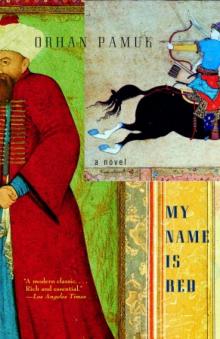 My Name is Red
My Name is Red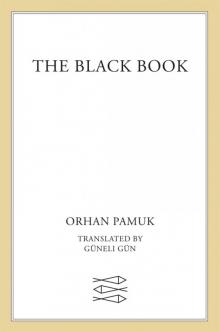 The Black Book
The Black Book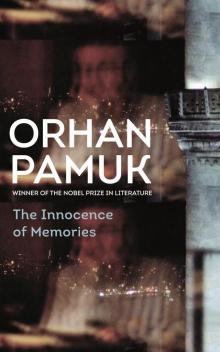 The Innocence of Memories
The Innocence of Memories The White Castle
The White Castle Other Colors
Other Colors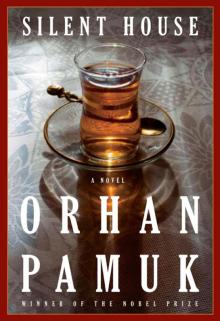 Silent House
Silent House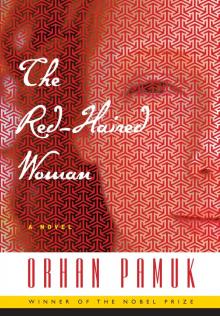 The Red-Haired Woman
The Red-Haired Woman The Museum of Innocence
The Museum of Innocence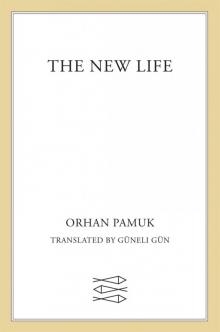 The New Life
The New Life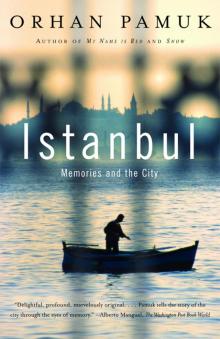 Istanbul
Istanbul